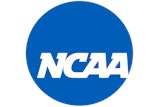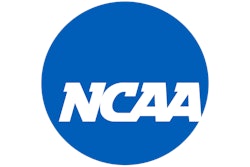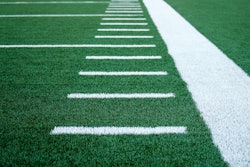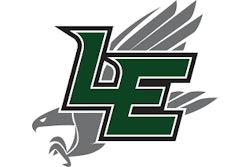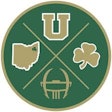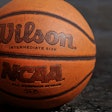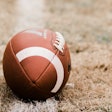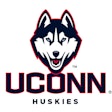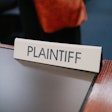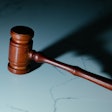Emphasis on Institutional Control of College Athletic Departments Has Generated Greater Respect for NCAA Rules
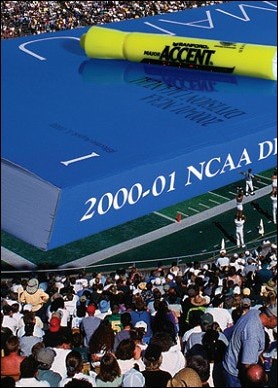
Alison Sexton hadn't completed her second month as compliance coordinator at Marist College when she uncovered evidence that her first job in a campus athletic department - landed on the strength of a legislative services internship in the NCAA's national office - would prove challenging.
While reviewing the eligibility of fall sports participants, Sexton was surprised to discover that one student-athlete, a transfer, had competed for Marist the previous season in violation of NCAA rules, which mandate one year of athletic ineligibility upon a transfer student's arrival at his or her new campus. "We ended up having to forfeit games, and the kid had to sit out the year to make up for the previous year," says Sexton, now the associate athletic director for rules compliance at Fairfield University. "Those are the cases that are most difficult, when student-athletes get penalized for something that wasn't their fault."
Inadvertent oversights like that one, detected by Sexton 10 years ago, are rooted out with increasing regularity these days in a collegiate athletics climate that emphasizes better understanding of NCAA rules and renewed focus on following them. The position of compliance coordinator, unheard of as recently as the mid-1980s, has evolved from serving as one of several hats worn by a single individual to dedicated full-time appointments, often numbering three or four within a given Division I athletic department.
"The atmosphere has changed," says Noreen Morris, assistant commissioner for legislative services at Conference USA and president of the National Association of Athletics Compliance Coordinators. "Each time someone gets in trouble and as more and more schools are placed on probation, the standard that you are held to is heightened. You have to look and see where they fell and then create systems to make sure it doesn't happen to you."
NCAA officials bristle at the phrase "in trouble." To them, the growing number of rules violations that have come to light over the course of the past decade is a sign that compliance is now being taken seriously on campus. Consider that in 2000 a combined 2,024 secondary infractions - those of the inadvertent-oversight variety - were recorded in all three NCAA divisions, increasing steadily each year from a total of 236 in 1990. (Less-common major infractions varied annually within a range of eight to 16 over that same period.) Of last year's secondary total, 1,198 violations were reported by the school in question and 774 were reported through the schools' conferences, leaving a mere 51 discovered through NCAA inquiries. "There's an emphasis here on self-policing and self-reporting, so I don't think that it's unusual to see these numbers," says Jane Jankowski, the NCAA's assistant director for public relations. "I think that colleges and universities believe they're taking a positive step by reporting something that they learn about, rather than having someone else come in and discover it for them."
That's not to say that schools can't seek assistance in their self-policing efforts. In fact, in January 1998 the NCAA made it mandatory that each institution's rules compliance program be the subject of an evaluation by "an authority outside of the athletic department." And while audits conducted by conference offices or by the NCAA itself (at no cost to member schools) satisfy this requirement, today's compliance landscape is littered with former NCAA enforcement personnel and newly anointed sports-law scholars who have taken their expertise to the private sector. Law firms have launched collegiate sports divisions, and consulting firms have done likewise. Other consultancies have been founded solely on the premise of assisting athletic departments with NCAA rules compliance. As Rich Hilliard, a partner at the Indianapolis-based law firm of Ice Miller and a past NCAA enforcement director, says, "It's an industry."
How, then, was a need for this industry created in such a short time? Other than the ongoing addition of new rules interpretations, the fundamental spirit of the NCAA manual (now numbering 480 pages, half of which serve as "the compliance person's bible," as Morris puts it) has remained unchanged for decades. Instead, compliance insiders point to a number of infractions cases that surfaced in the late 1980s and early '90s in which the NCAA found that the athletic departments under investigation lacked "institutional control" over their own day-to-day operations. Even where internal efforts had been made to monitor activities such as coaches' recruiting trips and student-athletes' summer jobs, if those efforts proved ineffective, the NCAA took notice. Consequently, so did NCAA-member institutions everywhere.
"Initially, everyone was like, 'Wait a minute. What type of violation is that. We're obviously suffering a significant penalty for that violation. What is institutional control?' " says Hilliard, one of four attorneys dedicated to collegiate sports practice at Ice Miller. "That's really the NCAA sending a mandate that you need to make sure you show preventive measures that ensure you are in compliance with NCAA rules. Thus, the creation of an individual on campus who has that responsibility."
"The infractions cases shifted from instances in which people just weren't paying any attention at all, and didn't really have any system in place to try to catch a violation, to where people would have systems in place, but they wouldn't adequately monitor them," says Steve Morgan, a former NCAA enforcement supervisor and one of four attorneys currently serving the collegiate sports division of Bond Schoeneck & King, a Syracuse, N.Y.-based law firm best known for its investigative work. "Over the years, people have become much better at putting in place systems to monitor the various aspects of their programs, but then there's a tendency to relax and say, 'OK, we've got a system in place now.' But if you're not monitoring the system, you don't know whether it's really engaged and functioning or whether you've just created a paper process that isn't really accomplishing anything."
Consequences resulting from a system out of control can be dire. The University of Minnesota's academic fraud scandal, self-reported to the NCAA after a local newspaper broke the story in March 1999, led to a self-imposed post-season ban for the men's basketball team and four years of probation for the athletic department at large, during which it must submit annual compliance reports to the NCAA. Minnesota's basketball program was further hamstrung by reductions in financial aid and recruiting. The six-month investigation that led to these and other sanctions produced a 1,500page report and a price tag approaching $2 million.
"The problem that they ran into - that student-athletes were not doing their own work - is the kind of thing that may have been detected by an audit early on, so that somebody doesn't end up writing 400-plus papers for athletes over a four- or five-year period," says Morgan, whose firm led the Minnesota investigation. "If you catch it, self-report it, take steps to fix it and eliminate continuing violations, the NCAA is more likely to minimize the significance of those violations."
Moreover, a proactive compliance check is far less likely to produce financial surprises than a reactive investigation. According to published reports, Minnesota's outlay was two to four times what school officials anticipated at the outset of the academic fraud probe. "A compliance review is basically a set dollar amount," says Chuck Smrt, a former NCAA enforcement official and founder of The Compliance Group, a Lenexa, Kan.-based consultancy. "The investigative part of it is more of an hourly situation, because you don't know where an investigation is going to take you."
Says Morgan, "One of the myths in our business is that it's prohibitively expensive to have us come in and do something. That's because people see fees in the media that relate to an entire infractions case, a major investigation process, and all of a sudden you're talking about hundreds of thousands of dollars."
"It's like an insurance policy," adds Hilliard. "If you have to go through a major infractions case, you not only have to tap resources in terms of time spent by your on-campus people, but if you have to retain outside counsel, the legal fees can rapidly get into six figures. Preventive measures, in the form of an audit or compliance review, represent a fraction of the costs of dealing with a major infractions case."
Preventive compliance measures can assume a variety of forms. There's the compliance review, described by Hilliard as an "aerial photograph," a means of determining whether systems are in place within an athletic department that are designed to prevent NCAA violations from occurring in four fundamental areas: recruiting, financial aid, initial eligibility and continuing eligibility. An audit goes a step further, ensuring that systems are being properly used. This requires closer examination and may entail issues related to booster activity, amateurism, gambling, and camps and clinics, to name a few. "An audit will allow you the opportunity to make sure that the principles of institutional control, as defined by the NCAA, are engaged and functioning - that your systems are in place and working," Hilliard says.
Both measures require the chosen firm to dispatch one or more representatives to campus for several on-site visits that may last days or weeks, depending on the desired depth of analysis. Major sports such as football and men's and women's basketball may be examined in the first year, followed by Olympic sports such as softball and volleyball during subsequent visits. Prior to arriving on campus, a firm often requests documentation germane to the focus of its visit. For example, if football recruiting is to be audited, firm representatives will review phone logs and prospect contact lists weeks in advance. "It gives you the opportunity to ask meaningful questions about the data that's provided to you when meeting with the people who put that data together," says Hilliard. "It also gives you the opportunity to test that information to make sure it's accurate."
Another approach is to examine a different area of compliance across all sports with each yearly campus visit. One year may be a look at continuing eligibility, the next year financial aid, the third year recruiting, and so on. "We stagger the pieces of the program out to try to keep the cost in any given year down, and yet give a sense of comfort that somebody is independently auditing what you're doing," says Morgan.
Firms may also assist schools in conducting exit interviews with a cross-section of departing student-athletes, a process that tends to delve into all aspects of compliance on an annual basis. "If you do it over a period of time, as opposed to just a snapshot of one year, you can compare what's being said from year to year and look for patterns," Morgan says. "In talking to those student-athletes who have exhausted their eligibility, you can give the institution a fairly candid picture of what is going on."
Ultimately, the return on an athletic department's investment in reviews, audits, interviews and investigations is education - about rules, the compliance process and how to avoid repeat mistakes. "There's some positive fallout" to the preventive approach, Morgan says. "There's a certain amount of education that occurs just in having our people there. Just working with the people on campus, having them be aware of what it is we're looking at and what we're looking for helps educate them."
If an audit turns up a potential violation, more formal educational programming will be included as part of the service. "That can be as narrow as the specific concern we've identified, or we can broaden it and really educate people from the ground up," says Morgan. "That helps take something that could become major if it persisted over years and keep it in the NCAA secondary category as more of an inadvertence during a particular year."
Like Morgan, Hilliard speaks of helping athletic departments create a "climate of compliance" - a department-wide knowledge of and respect for NCAA rules. "Every coach, every administrator has to be thinking or raising the question, 'Is this in conformity with NCAA rules.' You have to create a climate in which people are asking, 'Can I do this.' 'Can we do this.' " Hilliard says. "You have to avoid the situation in which the compliance officer is just a cop on campus. It's a shared responsibility, and everyone has to make sure that actions don't jeopardize any athletic program and put the athletic department in harm's way."
Columbus, Ohio-based Bricker Consulting Group has made efforts to create a climate of compliance among administrators elsewhere on campus. "Athletic compliance is now much bigger than the athletic department. Everybody in some way has some relationship to athletic compliance," says Debbie Katz, executive vice president of Bricker's college athletics division, launched last fall. "If you think about it within the whole principle of institutional control, compliance has specifically grown in a direction of shared responsibility. Within the institution there are registrars and financial aid people and admissions officers, and what I'm finding is that they need additional support. The compliance meetings that the NCAA holds are geared for compliance officers. These outside higher- ed people look to their associations for help."
And Bricker helps those associations. For example, Katz has assisted the Association of College and University Auditors, whose members in turn can better assist their respective schools' athletic departments, if given the proper tools, she says. "They have the audit skills, and they have the knowledge of the university. I've worked with them in terms of getting them up to speed on NCAA rules, and I've updated and revised the instrument that they have to use as an audit guide."
Several firms offer or are in the process of developing computer-based compliance primers and continually updated databases to complement the compliance resources already available through the NCAA and individual athletic conference offices. Is there a market for all these educational tools. It may be too soon to tell, but some insiders are skeptical. "Computerized education is hot in the sense that now a couple of the groups are doing this," says Smrt, who markets no compliance products, per se, through The Compliance Group. "But is education any more important than it was five years ago? No."
Human contact is still critical to rules comprehension, according to David McDonald, professor of Russian history at the University of Wisconsin and its new special assistant to the chancellor for athletics. McDonald is counting on people to make the difference in helping foster a better understanding of rules compliance within the UW athletic department, which endured two major infractions cases in the '90s and a much-publicized scandal (involving an area retailer/booster extending improper discounts and credit to dozens of student-athletes) that broke on the eve of the Badgers' 2000 football opener. "I've approached faculty organizations on campus to enlist their aid in devising more-creative approaches to teaching unwieldy and potentially uninteresting rules," says McDonald, who spent the months leading up to his July 1 appointment poring over the NCAA manual. "I'm hoping that reps from these bodies will come look at a couple of conventional instructional sessions, then work with our presenters on ways to deliver their messages more effectively. In addition, these same groups have worked a lot on learning assessment, particularly in science education. I hope to tap into this pool of expertise in the interests of finding out what's working and what isn't."
With more athletics officials than ever dedicated to NCAA rules compliance and a burgeoning number of third-party firms seeking a sliver of the consulting niche - not to mention a governing body that not only enforces the rules but helps members follow them - will athletic departments be left with any excuse for systems that don't work?
"To an extent, the answer to that has to be no, and that's part of why you see the NCAA infractions cases with this institutional-control issue becoming so preeminent," says Morgan. "The combination of all of those things has probably gotten us to a point where the NCAA is not going to be very tolerant of athletic departments saying, 'We just didn't get it,' or 'We couldn't figure out how to comply.' "
Is the compliance movement as an industry a sign that college athletics is intent on cleaning up its act or that it is rapidly running amok? "In all of this, no matter what kind of preventive work you do, there will always be people intentionally acting outside the rules, so there's nothing that works 100 percent to keep a program from having a major case," Morgan says. "But I do think we're seeing a different environment in intercollegiate athletics than we did in the late '70s. Now, you don't see any particular tolerance for certain levels of recruiting violations or benefits being provided to students among a good ol' boys network. What you see more frequently is this failure to monitor how NCAA rules apply to given situations."
"I don't think it's running amok," adds "We're talking about large athletic departments that have invested a large amount of money in their department of athletics. As opposed to running out of control, these are efforts to control the process and be in compliance with the rules as mandated by the membership. They are an attempt to self-regulate something that has gotten very large to make sure that it's not a runaway train. As one of 957 member institutions in the NCAA, you have an obligation to report violations, which is unique in many ways to any organization.
"These are all efforts to control collegiate athletics for the betterment of student-athletes."














